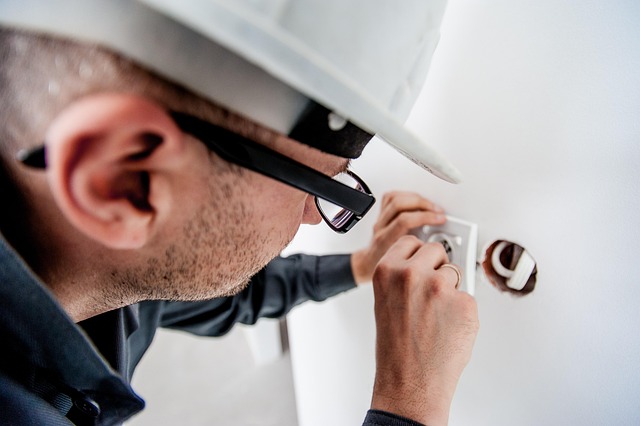Structural cracks, from foundation settlement to seismic activity, pose both aesthetic and safety issues. Pier Installation offers a modern, efficient repair solution for various crack types, particularly in foundations. This method strategically places supports beneath the building, stabilizing and preventing further crack spread. Suitable for diverse surfaces and sizes, Pier Installation provides swift, durable repairs with minimal disruption. Proper pier selection based on soil conditions and structure design is key to ensuring structural integrity and preventing future damage. Regular post-repair inspections are vital for long-term stability.
Structural cracks can weaken buildings and pose significant safety risks. Understanding their causes and types is essential for effective repair. This article delves into the world of structural crack repair, comparing traditional methods with the innovative Pier Installation technique. We explore the benefits, step-by-step process, selection criteria, and maintenance tips for pier installation, providing a comprehensive guide to ensure durable solutions for various crack scenarios.
Understanding Structural Cracks: Causes and Types

Structural cracks can be a significant concern for any building or infrastructure, as they not only compromise aesthetics but also pose potential safety hazards. Understanding the causes and types of these cracks is essential in implementing effective repair strategies. Cracks may arise due to various factors such as settlement of the foundation, differential movement of materials, corrosion, or even seismic activity. These forces can lead to different crack patterns, including vertical, horizontal, diagonal, or branching cracks.
One common type of structural damage is the occurrence of foundation cracks, often requiring Pier Installation techniques for repair. Foundation cracks are typically caused by soil settlement or shifting, leading to uneven loading on the structure. Piering involves the strategic placement of supports beneath the building to stabilize and align the foundations, effectively preventing further crack propagation.
Traditional Repair Methods vs Pier Installation

Traditional crack repair methods often involve a time-consuming process of drilling, chiseling, and filling the cracks with mortar. This method requires skilled labor and can be disruptive to the surrounding structure. In contrast, Pier Installation offers a modern and efficient solution. It involves the strategic placement of metal or concrete piers beneath the affected area, providing immediate structural support and preventing further crack propagation.
Pier Installation is particularly advantageous for its minimal invasiveness. Unlike traditional methods, it does not require extensive demolition or alteration of the existing structure. This technique is suitable for a wide range of cracks, from small hairline fractures to larger, more severe ones. By selecting Pier Installation, property owners can benefit from a swift and durable repair that preserves the integrity of their structures while ensuring longevity and stability.
The Benefits of Pier Installation for Crack Repair

Pier installation is a highly effective method for crack repair, offering numerous advantages that traditional repairing techniques can’t match. This innovative approach involves strategically placing supports beneath the surface to stabilize and hold together fractured structures. By doing so, pier installation not only halts further damage but also prevents costly collapses or structural failures.
One of its key benefits is its versatility; this technique can be applied to a wide range of surfaces and structures, from concrete buildings to ancient masonry walls. It’s especially useful for repairing cracks in areas that are difficult to access or where traditional methods would be disruptive. Pier installation also provides long-lasting results, ensuring the stability and integrity of the repaired area for many years.
Step-by-Step Guide to Pier Installation Process

The Pier Installation process involves several crucial steps to ensure structural integrity and long-lasting repairs. Firstly, an assessment is conducted to determine the extent of damage and the most suitable piering technique. This might include inspecting the crack’s length, width, and pattern to decide on the type and placement of piers. Next, the area is prepared by removing any debris or loose material around the crack, ensuring a clean and level surface for installation.
Installation begins with digging holes at strategic locations along the crack. These holes are then filled with concrete to create strong foundations for the piers. After setting, steel piers are carefully inserted into the concrete, acting as anchors to support and stabilize the structure. This process is repeated across the length of the crack, offering significant structural support. Finally, once the piers are securely in place, any remaining gaps are filled with appropriate filler material to complete the repair.
Choosing the Right Foundation Pier System

When it comes to repairing structural cracks, especially in foundation issues, selecting the appropriate pier installation system is paramount. Different structures may require specific types of piers to ensure stability and longevity. For instance, concrete slabs often benefit from end-bearing piers, which transfer load directly to the soil bearing capacity at a limited depth. On the other hand, deep foundation piles like helical or friction piers are ideal for buildings with significant weight distribution, as they penetrate deeper into the earth for increased support.
Proper pier selection involves understanding soil composition and conditions, building design, and structural engineers’ recommendations. Each pier type has unique advantages; for example, helical piers excel in unstable soils while providing rapid installation. Conversely, concrete piers might be more suitable for areas with consistent soil conditions, offering cost-effectiveness and durability. Choosing the right foundation pier system is a critical step towards effective crack repair, ensuring structural integrity and preventing future damage.
Maintaining and Monitoring Repaired Structural Cracks

After successful structural crack repair, especially through methods like pier installation, maintaining and monitoring is crucial to ensure long-term stability. Regular inspection is key; checking for any new cracks or signs of movement in the structure. This proactive approach helps identify potential issues early on, preventing further damage.
Monitoring involves tracking changes in crack width, length, and pattern. Professional contractors often recommend setting up a maintenance schedule, including re-evaluation every few years. By staying vigilant, homeowners can guarantee that their repaired cracks remain intact, contributing to the overall safety and integrity of their properties.
